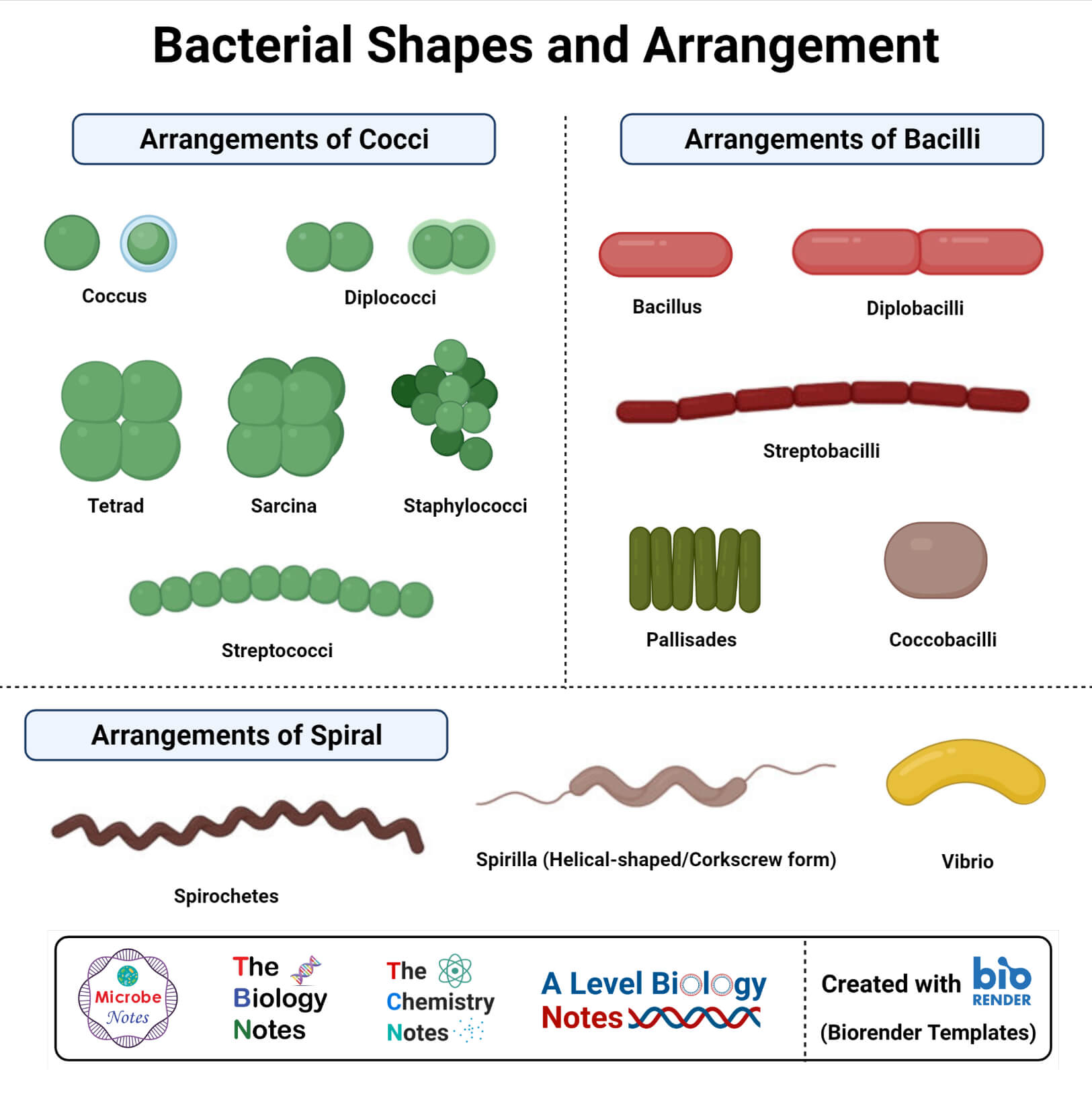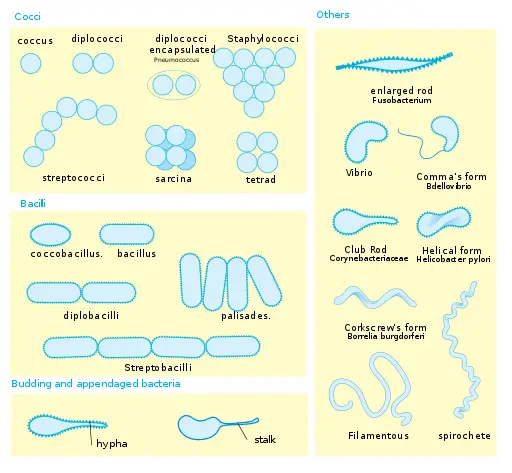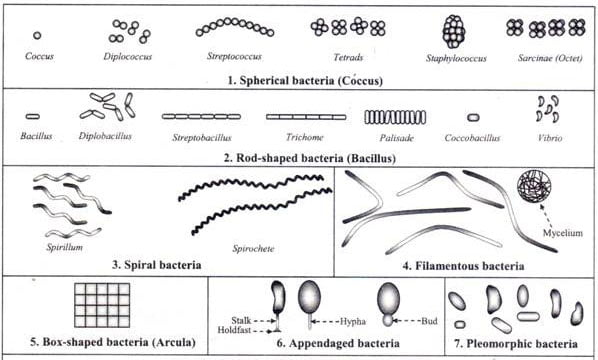What Is the Shape Used to Describe These Cells
A description of the shape of a cell is called the cell morphology. In some cases the cells are very long.

Morphology Of Bacteria Sizes Shapes Arrangements Examples
These are usually microcytic and often hypochromic.

. It provides shape and support to the cells and protects them from mechanical shocks and injuries. Shape of Bacterial Cell. A worksheet is made up of many rectangles called as cells.
Prokaryotic cells come in many different shapes and sizes that you can see under a microscope. The line that surrounds the range is. RBCs having the shape like teardrop or pear.
If you look at the image of the red blood cells you will see a white dot in the center of the cell that is where the nucleus used to be. Many spirilla are rigid and capable. A cell is said to be the intersection of a column and a row.
Cells remain in chains after dividing. -interstitial lamellae - located in between the osteons. Such cells exhibit spindle shape.
Similarly one may ask what is a rectangular group of cells. This is good material to demonstrate cytoplasmic streaming. The size and shape of a cell are related to its function and are governed by four factors1 surface-volume ratio 2 nucleocytoplasmic ratio 3 rate of cellular activity 4 cell associations.
What is the term used to describe these enzymes. Myelofibrosis megaloblastic anemia IDA thalassemia. More specifically it looks at how the surface-area-to-volume ratio of a cell helps determine how efficient that cell is at exchanging macromolecules with the external environment.
Not all cells have a nucleus and are termed anucleate. The nerve cell transfers and receives. Cocci can be single or multiple in a group of 2 4 8 etc.
These cells can exist in several different arrangements that include. A LPS proteins on the surface of the cell kill surrounding tissue. Cells fall within specific limits based on the surface-area-to-volume ratio due to.
- concentric lamellae - circular shape. They are flattened epithelial cells may be spindle-shaped muscle cells or spider-shaped nerve cell etc. These are helmet or triangular shaped fragmented or greatly distorted RBCs smaller than normal size.
Cocci or coccus for a single cell are round cells sometimes slightly flattened when they are adjacent to one another. A second binding site on an allosteric enzyme has the ability to bind the molecule that alters the shape of the active site. The general term Chlorenchyma is used to describe photosynthetic Parenchyma regardless of its location.
The nucleus is ejected when they mature. The most common cell morphologies are cocci spherical and bacilli rods. Some examples of cocci are.
Considering an animal cell we can generalize the shape of a cell as round spherical or irregular. Plant cells are much more rigid and rectangular in shape. These cells are elongated in shape and contain myofibrils or thin strands made of the proteins actin and myosin.
D internal helical flagella allow the bacteria to twist its. Coccus plural cocci comes from the Greek for berry or the Latin for seed and is used to describe bacteria that are oval round and spherical-shaped. Most of the chemical reactions within a cell take place in this cytoplasm.
The cytoplasm is a thick clear jelly-like substance present inside the cell membrane. All cells come from preexisting cells a cell divides to form 2 identical cells eukaryotes-. Usually the cells are round elongated or spherical.
Cells remain in pairs after dividing. The cell is the basic organizational unit of life. All living things are composed of one or more cells.
There are also some cells which are long and pointed on both the ends. It is a rigid and stiff structure surrounding the cell membrane. Spirilla or spirillum for a single cell are curved bacteria which can range from a gently curved shape to a corkscrew-like spiral.
Arrangements of Bacilli rod shaped bacteria Spiral Bacteria. The size of a cell can be as small as 00001 mm mycoplasma and as large as six to twelve inches Caulerpa taxifolia. Cells remain in groups of four and divide in two planes.
Different shapes of bacteria are used to categorise bacteria. However pleomorphic bacteria can assume several shapes following are the three basic bacterial shapes. These leaves are only two cells thick except at the midrib and there is little tissue differentiation.
Learn more about Parts Structure and Functions of Cell in more detail here. Skeletal muscle cells are arranged in bundles of linear fibers. Teardrop cells are found in.
The elongated shape of these cells allows the contraction proteins to line up in an overlapping pattern hence making muscle flexing possible. Some may be branched like the neuron or the nerve cell. What is the second.
Skeletal muscle cells are very large cells and are multinucleate. Generally the unicellular organisms are microscopic like bacteria. Which of these cells tend to occur in tight clusters and may have prominent nucleoli immature chromatin and scant cytoplasm.
Compact bone is made up of lamella layers that are named according to their shape or position within compact bone. Coccibacillus are a mix of both while vibrio are shaped like a comma spirilla are shaped like a helix a spiral sort of like a. Study cells in the region halfway between middle and margin.
A rectangular group of cells is called as - Range. They achieve this movement by using their tail flagellum which is packed with energy. Bacilli or bacillus for a single cell are rod-shaped bacteria.
The idea that nonliving material can produce life. C special internal polyphasic granules are released which cause the rash. Acetylcholine is a neurotransmitter that transmits a signal from a nerve cell to a muscle cell causing the muscle to contract.
This section of the AP Biology curriculum focuses on cell size and shape. Cocci bacteria can be round oval or elongated or bean-shaped. Different shapes of a bacterial cell are.
These tadpole-shaped cells are the smallest in the human body. Coccus cocci plural bacteria are round oval or spherical in shape. They are motile meaning that they can move.
Some cells have more than one nucleus and are termed multinucleate. What is the term used to describe the abnormal RBC shape seen in this illustration. B cilia on the surface of cells allow bacteria to infiltrate the skin.

Some Mechanisms Of How Cells Organelles Take A 3d Shape Organelles Cell Organelles Cell Structure

Bacteria Size Shape And Arrangement

Plant Animal Cells Plant And Animal Cells Science Lessons Elementary Science Worksheets

No comments for "What Is the Shape Used to Describe These Cells"
Post a Comment